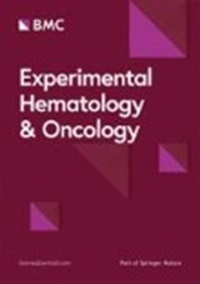癌症中的髓源性抑制细胞:克服肿瘤免疫逃避的治疗目标
IF 9.4
1区 医学
Q1 HEMATOLOGY
引用次数: 0
摘要
矛盾的是,免疫系统既可以抑制肿瘤的发展,也可以促进肿瘤的发展。经过消除、平衡和逃逸三个阶段的免疫编辑后,肿瘤细胞不再受免疫监视的限制,从而发展成为临床肿瘤。免疫逃逸的机制包括抗肿瘤相关免疫细胞的异常、对肿瘤细胞免疫抵抗的选择、T 细胞转运受损以及免疫抑制性肿瘤微环境的形成。一种独特的未成熟髓系细胞--髓源性抑制细胞(MDSCs)主要通过发挥免疫抑制作用和参与形成免疫抑制性微肿瘤环境来介导免疫逃逸。临床试验发现,癌症患者外周血中的 MDSCs 水平与肿瘤分期、转移和预后密切相关。此外,动物实验证实,消除 MDSCs 可在一定程度上抑制肿瘤的生长和转移。因此,MDSCs 有可能成为多种癌症的免疫治疗靶点,消除 MDSCs 有助于提高癌症治疗反应率和患者生存率。然而,目前尚缺乏对MDSCs的明确定义以及参与免疫逃逸的具体机制。在本文中,我们回顾了 MDSCs 群体在肿瘤发生发展中的作用以及在不同肿瘤环境中参与免疫逃逸的机制。此外,我们还讨论了如何利用这些细胞作为肿瘤免疫疗法的靶点。这篇综述不仅有助于系统全面地了解 MDSCs 在免疫系统对抗肿瘤反应中的重要作用,还为开发针对 MDSCs 的癌症疗法提供了指导信息。本文章由计算机程序翻译,如有差异,请以英文原文为准。
Myeloid-derived suppressor cells in cancer: therapeutic targets to overcome tumor immune evasion
Paradoxically, tumor development and progression can be inhibited and promoted by the immune system. After three stages of immune editing, namely, elimination, homeostasis and escape, tumor cells are no longer restricted by immune surveillance and thus develop into clinical tumors. The mechanisms of immune escape include abnormalities in antitumor-associated immune cells, selection for immune resistance to tumor cells, impaired transport of T cells, and the formation of an immunosuppressive tumor microenvironment. A population of distinct immature myeloid cells, myeloid-derived suppressor cells (MDSCs), mediate immune escape primarily by exerting immunosuppressive effects and participating in the constitution of an immunosuppressive microtumor environment. Clinical trials have found that the levels of MDSCs in the peripheral blood of cancer patients are strongly correlated with tumor stage, metastasis and prognosis. Moreover, animal experiments have confirmed that elimination of MDSCs inhibits tumor growth and metastasis to some extent. Therefore, MDSCs may become the target of immunotherapy for many cancers, and eliminating MDSCs can help improve the response rate to cancer treatment and patient survival. However, a clear definition of MDSCs and the specific mechanism involved in immune escape are lacking. In this paper, we review the role of the MDSCs population in tumor development and the mechanisms involved in immune escape in different tumor contexts. In addition, we discuss the use of these cells as targets for tumor immunotherapy. This review not only contributes to a systematic and comprehensive understanding of the essential role of MDSCs in immune system reactions against tumors but also provides information to guide the development of cancer therapies targeting MDSCs.
求助全文
通过发布文献求助,成功后即可免费获取论文全文。
去求助
来源期刊

Experimental Hematology & Oncology
Medicine-Oncology
CiteScore
12.60
自引率
7.30%
发文量
97
审稿时长
6 weeks
期刊介绍:
Experimental Hematology & Oncology is an open access journal that encompasses all aspects of hematology and oncology with an emphasis on preclinical, basic, patient-oriented and translational research. The journal acts as an international platform for sharing laboratory findings in these areas and makes a deliberate effort to publish clinical trials with 'negative' results and basic science studies with provocative findings.
Experimental Hematology & Oncology publishes original work, hypothesis, commentaries and timely reviews. With open access and rapid turnaround time from submission to publication, the journal strives to be a hub for disseminating new knowledge and discussing controversial topics for both basic scientists and busy clinicians in the closely related fields of hematology and oncology.
 求助内容:
求助内容: 应助结果提醒方式:
应助结果提醒方式:


